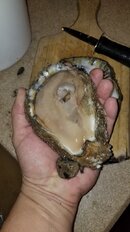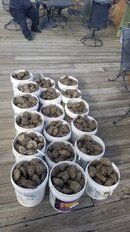Eric Sedletzky
Contributor
Has anyone ever come across any oysters while diving? I’m just curious.
I went to an oyster farm yesterday and picked up a few dozen. That got me thinking that maybe some of the larvae escapes and establishes itself somewhere else away from the sanctioned farm beds that’s legal to harvest by those who happen to come across them.
I would have to look up the regulations on oyster harvesting. I don’t even know if there is such a thing?
I would guess that oysters had to be wild at some point in history.
I love oysters.

I went to an oyster farm yesterday and picked up a few dozen. That got me thinking that maybe some of the larvae escapes and establishes itself somewhere else away from the sanctioned farm beds that’s legal to harvest by those who happen to come across them.
I would have to look up the regulations on oyster harvesting. I don’t even know if there is such a thing?
I would guess that oysters had to be wild at some point in history.
I love oysters.






